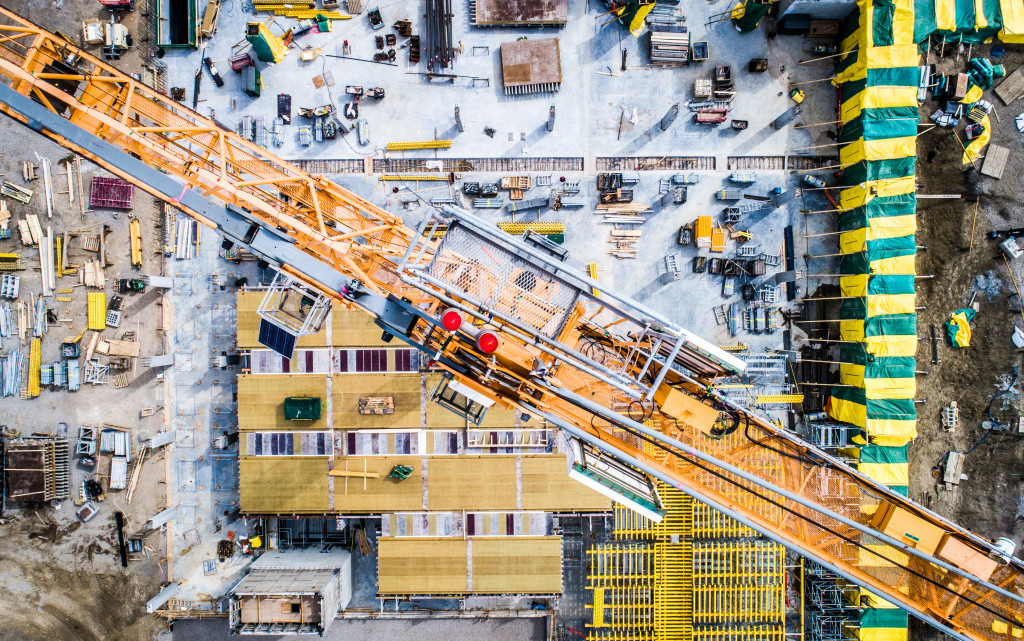- Protect the environment by monitoring chemical use, evaluating potential effects on vegetation and animal habitats, and investing in eco-friendly materials.
- Put in place stormwater pollution prevention measures to prevent hazardous materials from entering nearby water sources.
- Prioritize earthquake protection by meeting seismic building codes and incorporating protective elements into construction.
- Reduce community disturbance and pollution with noise-reducing materials and a carefully planned construction schedule.
Community projects play a significant role in improving and maintaining public safety. Whether adding sidewalks, designing bike paths, constructing parks for kids’ playgrounds, or establishing wildlife refuges, these projects can help keep communities safe. But with any construction project, there is always the risk of accidents or damages if proper preventive measures are not taken. So, focusing on a few strategies for ensuring safety in community projects is essential.
Protecting the Environment
Protecting the environment is the first step you must take when embarking on any community project. To accomplish this, it’s best to pay particular attention to controlling the effects of your construction sites. You can do so using the following strategies:
Be Mindful of Chemical Use
Any chemicals used should be monitored closely, so that they do not seep into waterways or contaminate local ecosystems. There should also be measures to prevent hazardous materials from entering any nearby bodies of water. You can invest in eco-friendly materials and equipment to minimize the environmental impact of your project.
Study Potential Effects
Any vegetation that may be affected by the project should be evaluated and protected whenever possible. Careful consideration should also be given to animal habitats that could potentially be disturbed by the construction activity. Once these environmental protections have been established, it will provide greater assurance that no harm will come from the project itself or its associated activities — both during and after its completion.
Weather Control
Unforeseen weather conditions can also affect the safety of any project, so it’s essential to plan. This involves proper weather-proofing materials and an emergency plan in severe weather. Here are some additional steps you can take to protect against unexpected weather:
Stormwater Pollution Prevention
Projects involving large-scale earth-moving activities often result in increased runoff flow when bad weather strikes. This could potentially discharge pollutants into waters downstream from a site. For this reason, stormwater management planning processes must occur before starting any project. Luckily, there are companies like Cearley SWPPP Management that can help address any stormwater-related concerns and ensure proper safety protocols are in place. You can visit their website at cearleyswppp.com for more details.

Earthquake Protection
Earthquake-proofing is also essential. Building codes for seismic protection should be met during the design phase of any project and updated whenever possible. Earthquake-proofing should also be incorporated into the construction process itself.
Safety nets, shields, and other protective elements (such as drainage systems) should be used to minimize the risk of damage from any seismic activity. This way, a structure can withstand seismic activity and protect those inside.
Hail Protection
If a project is located in an area prone to hail storms, it’s essential to be aware of the potential risks and take whatever steps possible to protect the site. This may include investing in hail nets and other protective materials that can help deflect the hail and making sure to use weather-resistant materials and equipment as much as possible.
Community Disturbance
Of course, it’s essential to consider the local community when pursuing any project. This means assessing the effects of your project and other disturbances that may be caused by it. It’s essential to ensure that any changes you make do not disturb the locals or negatively affect the community itself.

Noise Control
Proper noise pollution control should also be a priority. Depending on the nature of the project, this may involve investing in noise-reducing materials and equipment to limit the sound to a certain level. It’s also important to carefully plan the construction schedule so that any loud activities occur at times when they will not disturb the locals.
Waste Control
Finally, proper waste management is essential. This involves disposing of any construction materials in a responsible way – either through recycling or ensuring that the landfill is properly managed. Proper waste control also includes avoiding any illegal dumping or hazardous materials entering the environment.
By following these steps and taking the time to plan for all potential risks, you can ensure that any community project is safe from start to finish. Taking the necessary precautions will go a long way in protecting both the environment and the local community while also improving public safety.




